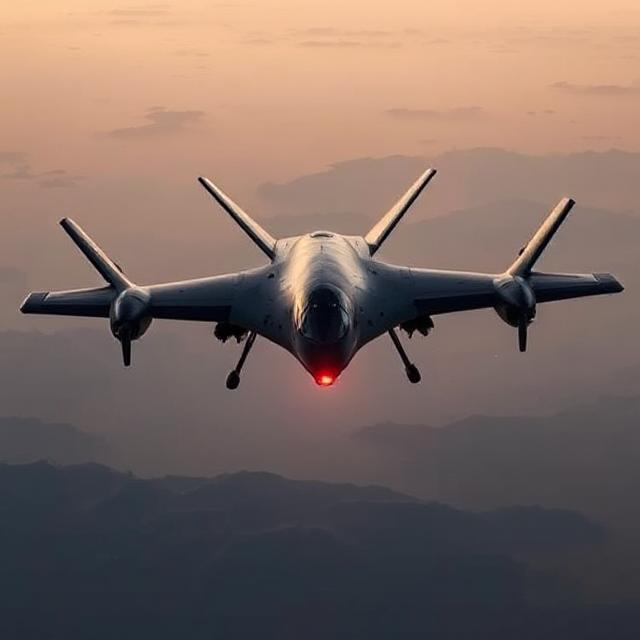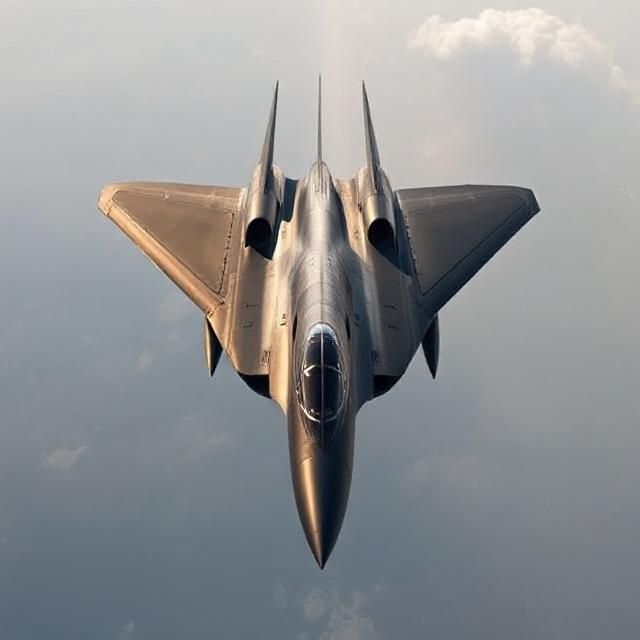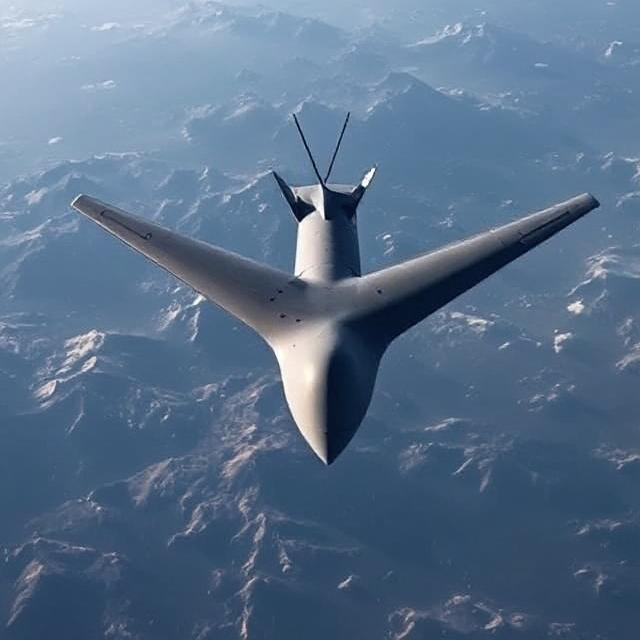
The world of experimental aircraft testing is where the boundaries of future military aviation are pushed beyond conventional limits. Hidden behind the walls of aerospace innovation labs, researchers and engineers work on next-gen fighter jets, radical propulsion systems, and secret stealth technology that could define the future of air combat. While mainstream aviation is dominated by widely known aircraft like the F-35 or B-21 Raider, there are lesser-known prototypes that remain in the shadows, undergoing testing in remote locations in Experimental Aircraft.
These aircraft represent the most advanced aircraft research, integrating new materials, artificial intelligence, hypersonic propulsion, and even directed energy weapons. Some are designed for reconnaissance, others for unmanned combat, and a few may even defy traditional aerodynamics altogether. Here are six experimental aircraft that could revolutionize aerial warfare in the near future.
1. The NGAD Fighter – The Air Superiority Jet of Tomorrow
One of the most closely guarded future military aviation projects is the Next-Generation Air Dominance (NGAD) fighter, a highly classified program expected to replace the F-22 Raptor. Unlike previous aircraft, NGAD is not a single fighter jet but an entire network of advanced aircraft research, integrating both manned and unmanned systems.
Key Features and Capabilities:
- AI-Assisted Combat – NGAD will use artificial intelligence for target acquisition, predictive threat analysis, and autonomous decision-making.
- Adaptive Stealth – This aircraft is rumored to have secret stealth technology that adapts to various radar frequencies, making detection nearly impossible.
- Next-Gen Propulsion – A new generation of variable-cycle engines will allow greater fuel efficiency and faster speeds.
- Loyal Wingmen Drones – NGAD is expected to operate alongside AI-controlled drones that will act as force multipliers in combat, Experimental Aircraft.
While the U.S. Air Force has acknowledged the existence of NGAD, its true capabilities remain highly classified. Given its emphasis on aerospace innovation labs and next-gen technologies, this could be the most powerful air superiority platform ever developed.

2. The SR-72 “Son of Blackbird” – The Hypersonic Successor to the SR-71
Lockheed Martin’s Skunk Works division is known for developing revolutionary aircraft, including the SR-71 Blackbird. Now, they are reportedly working on its successor, the SR-72, a next-gen fighter jet that will operate at hypersonic speeds.
What Makes the SR-72 Revolutionary?
- Mach 6+ Speed – Expected to travel at six times the speed of sound, making it nearly impossible to intercept.
- Dual-Mode Engine – A combination of turbine and scramjet propulsion, allowing it to switch between subsonic and hypersonic speeds.
- Long-Range Strike Capabilities – Designed for both reconnaissance and high-speed strike missions, potentially replacing manned bombers in the future.
With growing tensions between world powers, hypersonic reconnaissance and strike aircraft like the SR-72 could change modern warfare by reducing reaction times for enemy defenses to mere minutes.
3. The XQ-58A Valkyrie – The AI-Controlled Combat Drone
As future military aviation shifts toward unmanned capabilities, the XQ-58A Valkyrie is one of the most promising projects currently undergoing experimental aircraft testing. Developed by Kratos Defense & Security Solutions, this low-cost, AI-driven combat drone is designed to support manned aircraft in battle, Experimental Aircraft.
Breakthrough Features:
- Loyal Wingman Concept – The Valkyrie will fly alongside traditional fighter jets, providing electronic warfare, reconnaissance, and attack support.
- Stealth and Maneuverability – Integrated secret stealth technology allows it to evade radar detection while maintaining high-speed performance.
- AI-Driven Combat – Unlike previous drones, the Valkyrie can engage in dogfights and make tactical decisions autonomously.
- Modular Payloads – Capable of carrying different weapon systems and sensors for a variety of missions.
By reducing reliance on human pilots in high-risk missions, the XQ-58A represents a major shift in advanced aircraft research and military tactics.

4. The BAE Magma – The Jet Without Moving Parts
Traditional aircraft rely on moving surfaces like flaps and ailerons for control, but the BAE Magma is testing an entirely new concept—using airflow alone to steer the plane. Developed by BAE Systems and the University of Manchester, this experimental aircraft could redefine next-gen fighter jets by eliminating mechanical components that are vulnerable to wear and tear.
How Magma’s Technology Works:
- Fluidic Thrust Vectoring – Uses jets of air to direct thrust, eliminating the need for physical rudders or elevators in Experimental Aircraft.
- Plasma-Based Flight Control – Experimental research suggests that ionized air can be manipulated to control an aircraft’s movement.
- Stealth Enhancements – Without traditional flight surfaces, Magma could be significantly harder to detect by radar.
By removing mechanical control surfaces, the Magma’s secret stealth technology could make future aircraft more durable, efficient, and resistant to electronic warfare.
5. The RQ-180 – The Secret Stealth Reconnaissance Drone
Very little is officially known about the RQ-180, but defense analysts suspect it is one of the most advanced reconnaissance aircraft currently in service. Believed to be developed by Northrop Grumman under deep aerospace innovation labs, this drone operates with extreme stealth, making it the perfect spy aircraft.
Suspected Features:
- Radar-Absorbing Coatings – Uses the latest secret stealth technology to remain invisible to even the most advanced radar systems.
- Long-Endurance Missions – Designed for prolonged surveillance over enemy territories, staying airborne for up to 24 hours.
- Autonomous AI Navigation – Reduces the need for remote human operators, allowing it to adapt to battlefield conditions in real time.
While official details remain classified, satellite images and leaked documents suggest the RQ-180 has already been deployed in various global conflict zones.

6. The X-59 QueSST – The Jet That Breaks the Sound Barrier Silently
Supersonic travel is often associated with the loud sonic boom created when an aircraft exceeds the speed of sound. However, NASA’s X-59 QueSST is currently undergoing experimental aircraft testing to change that perception.
What Makes the X-59 Special?
- Silent Supersonic Flight – Designed to reduce the typical sonic boom to a barely noticeable “thump.”
- Commercial Supersonic Travel Applications – If successful, this technology could pave the way for high-speed commercial airliners that don’t disturb populated areas.
- Advanced Aerodynamic Design – Features a long, narrow body and unique engine placement to minimize shockwaves, Experimental Aircraft.
Although not a next-gen fighter jet, the X-59’s breakthrough technology could influence future advanced aircraft research, especially for military transport and rapid response missions.
Conclusion
The world of experimental aircraft testing is filled with innovations that could reshape the future of aviation. From hypersonic spy planes like the SR-72, to AI-driven combat drones like the XQ-58A Valkyrie, and revolutionary stealth reconnaissance platforms like the RQ-180, these aircraft represent the cutting edge of future military aviation. As aerospace innovation labs continue pushing the limits of engineering and physics, the next generation of air combat will likely feature aircraft that are faster, smarter, and stealthier than anything seen before.
The integration of secret stealth technology, artificial intelligence, and new propulsion systems will determine the next era of aerial dominance. While many of these next-gen fighter jets remain classified, they are shaping the battlefields of tomorrow, Experimental Aircraft.
